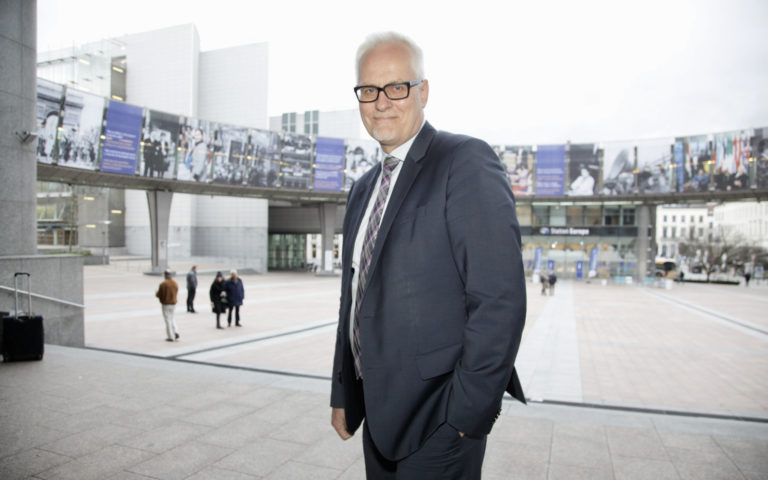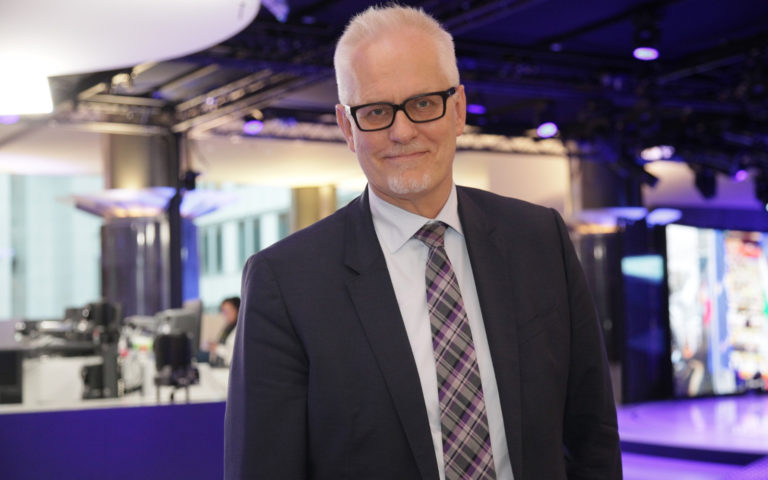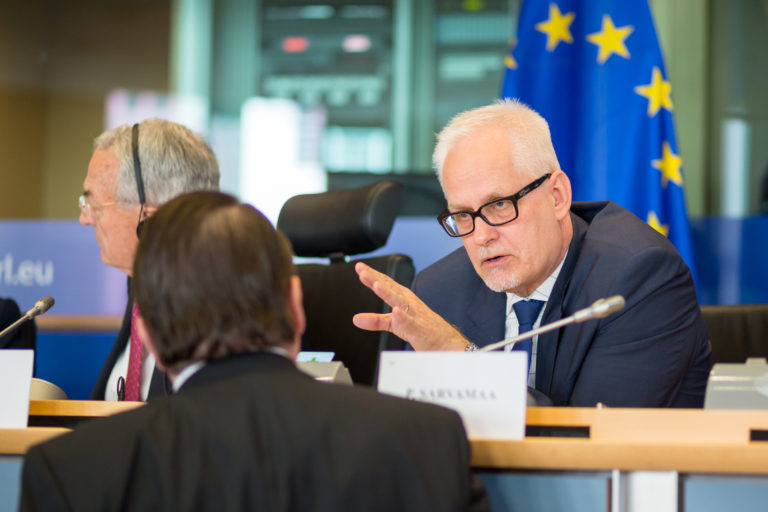Maahanmuuttopolitiikka määrittää Euroopan tulevaisuuden, Verkkouutiset
29.4.2019

Suomalaista poliittista keskustelua leimaa muuallakin Euroopassa ilmenevä vaiva. Maahanmuutosta puhuminen on jäänyt liiaksi yhden porukan harteille. Keskustelua – jos sitä voi sellaiseksi kutsua – käydään tunnepohjalta ja tarjolla on vain rasistin tai isänmaan vihollisen leima. Ei ihme, että valtaosa tyytyy seuraamaan kärkästä kommentointia hiljaisena vierestä tai ostaa parempien vaihtoehtojen puutteessa heikosti perusteltuja heittoja.
Maahanmuuttopoliittisen keskustelun köyhyys on meidän kaikkien tappio. Aihe ei ole helppo. Samalla se on äärimmäisen tärkeä, sillä sitä koskevat ratkaisut ja niissä onnistuminen määrittelevät Euroopan tulevaisuuden. Siksi sen linjaukset on tehtävä vastuullisesti ja realistisen tilannekuvan pohjalta. Mielikuvien varaan rakentamalla ei synny käytännön tasolla toimivaa politiikkaa.
Välillä kannanotoissa eksytään epämääräisille raiteille jo sen takia, että perusteet ovat hukassa. Muuttoliikettä puidessa on aina pidettävänä kirkkaana mielessä, puhutaanko laillisesta maahanmuutosta, laittomasta maahanmuutosta vai kansainvälisestä suojelusta ja turvapaikanhakijoista.
Silloin kun puhutaan laittomasta maahanmuutosta EU:n alueelle, tavoitteenani on ehdoton nollapeli. On täysin kestämätön ajatus, että meillä on vapaan liikkuvuuden alue, jos sen rajat vuotavat kuin seula, kuten vuonna 2015 kävi.
Raivostuttavinta on se, että siirtolaiskriisin paljastamat heikkoudet olivat jo entuudestaan tiedossa, mutta EU-mailta ei löytynyt poliittista tahtotilaa tarttua asiaan ennen kohtalokasta piikkiä muuttoliikkeen volyymissa. Tätä on vaikea ymmärtää, varsinkin kun vastuu ulkorajojen valvonnasta on viime kädessä nimenomaan jäsenvaltioilla itsellään.
Ulkorajojen saralla EU:n rooli on kehittää yhteistä politiikkaa ja mahdollistaa kaikkia hyödyttävä yhteistyö. Hyvä esimerkki on Euroopan parlamentin pari viikkoa sitten hyväksymä päätös Euroopan raja- ja merivartioston vahvistamisesta 10 000 hengen pysyvällä joukolla. Olin osaltani varmistamassa, että vartioston budjetti suunnitellaan vastuullisesti vastaamaan sille uskottua tehtävää: tukea EU-maiden rajavalvontaa, rikollisuuden torjuntaa ja kielteisen turvapaikkapäätöksen saaneiden palauttamista.
Erityisesti palautusten saralla apu on todella tarpeen. Siinä missä paine ulkorajoilla on helpottanut ja laittomien rajaylitysten määrä oli viime vuonna vain 8% vuoden 2015 yli 1,8 miljoonasta, onnistuneiden palautusten osuus sen kuin huononee.
Euroopan komission virallisten lukujen mukaan kielteisen turvapaikkapäätöksen saaneista tai muuten EU:n alueella laittomasti oleilevista henkilöistä palautettiin onnistuneesti vuonna 2016 45,8 % ja vuonna 2017 36,6 %. Tämä trendi on ehdottavasti saatava kääntymään.
Palautuspäätöksen antaminen laittomasti EU-alueella oleilevalle on jäsenvaltioiden oikeus ja velvollisuus. Palautuksen toteuttamisen suhteen kuvio onkin monimutkaisempi. Silloinkin kun päätös on lainsäädännön ja ihmisoikeuspykälien suhteen selvä, käytännön palautusta hankaloittaa usein henkilön tai vastaanottavan EU:n ulkopuolisen maan haluttomuus yhteistyöhön.
Toisaalta monissa tilanteissa haasteet ovat johtuneet EU-mailta puuttuvista keinoista jakaa tietoja keskenään tai koko turvapaikkajärjestelmän valuvioista. Näihin epäkohtiin puututaan parhaillaan. Työn alla on joukko uudistuksia, joilla halutaan muun muassa yhtenäistää ja nopeuttaa nykyisin varsin epäselvää turvapaikanhakuprosessia. Samalla saataisiin järjestelmän väärinkäytöksiin puuttumiseen paremmat työkalut. Ehdotus jumittaa nyt jäsenvaltioiden pohdiskeltavana neuvostossa, ikävä kyllä.
Pitkittyneet lupaprosessit sekä vaihtelevat säännöt porsaanreikineen hukkaavat resursseja ja tuottavat valitettavia seurauksia kaikille osapuolille. Tarvitsemme johdonmukaiset edellytykset tulijoiden jäämiselle Eurooppaan. Sen jälkeen, kun tulokriteerit ovat selkeät, prioriteetiksi nousevat työllistymistä ja integraatiota helpottavat toimet. Luvan kanssa tulevilla siirtolaisilla on oltava aito mahdollisuus päästä osaksi yhteiskuntiamme.
Viime vuosista oppineina meillä on mahdollisuus tehdä parempaa ja vahvempaa maahanmuuttopolitiikkaa. Tarvittavat päätökset eivät kuitenkaan synny itsestään. Toivoa sopii, että suomalaiset uskaltavat vaatia kansallisilta ja eurooppalaisilta parlamentaarikoiltaan aitoa johtajuutta maahanmuuttopolitiikassa erilaisten mielikuvien maalailun sijaan.
Julkaistu Verkkouutisissa 29.4.2019

